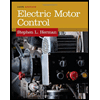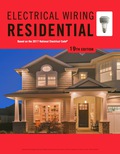annotated-LAB1
pdf
keyboard_arrow_up
School
University of North Texas *
*We aren’t endorsed by this school
Course
3030
Subject
Electrical Engineering
Date
Feb 20, 2024
Type
Pages
4
Uploaded by DoctorExplorationArmadillo27
LAB ASSIGNMENT 1 : LAB ANSWERS: TYPE THE ANSWERS INTO THE DOCUMENT ALONG WITH THE PICTURES. Read the document labeled as Praat instructions. Install praat on your computer per instructions. LAB TASKS: A) There is a sound file called 44100HZ-16bit. IN THE Lab folder on canvas. Download the file somewhere on your computer and per instructions you have in the praat document, Open this file in praat. It will initially look like a solid black pane. You need to zoom in to see the waveform. Create a spectrogram pane, waveform pane, and a pitch contour pane for the sample. Look at the PITCH CONTOUR pane. The default setting for the duration of the time segment per dot (in Pitch Contour) is 10 ms. B) Record the following sounds using praat and save them separately (sustain each for 3-5 sec) /al, /il ,/sl, Iney/. [Record your recording until you have a signal that is neither “clipped” nor too low.] QUESTIONS: 1. Take the screen shot from the waveform of the downloaded sounds files from canvas (44100HZ ) and all the recorded sounds and paste here (just make sure you have zoomed in enough that we could see the cycles clearly). modifiable soun VANAAAT NVVUU\/V 5000 Hz ved spectrogram —e— derived pitch gog 1y, 14.917190 Visibls rt 0.027151 dt 14.944340 14917190 | e seconcs | 15.055660 | [ Total duration 30.000000 seconds | /a/
1111111 0.07196 ~ modifiable sound Jfl | . | NHH\ .F/\ ,“JJ \\ . “F\ A H\ J’r\ mf\ mn(J\. i nwaw i AL A e "%"J W'N W Wv V {(JI \H M{ vy vy w FJ 1‘ | | | L ‘ uf\\.\ ‘ | | ctrogram derived ’;naoom 1.674632 [1.674632 Visible part 0.047744 seconds 1.722375| 1.674632 /s/
0.03598 ~ modifiable sound 0Hz 50 Hz 1.846338 Visible part 0.008005 seconds 1.854343) 1.846338 I o~ M 1.846338 /hey/ 0.02197, -0.01178, 0.055770 l 0.059461 1.386521 [1.386521 Visible part 0.115231 seconds 1.501752| 0.827500 Reflect on the differences between the waveforms for your recordings and the audio file in the folder (44100HZ). In particular periodic vs aperiodic and simple vs complex waves. 44100HZ Periodic and simple /al periodic and complex /il aperiodic and complex /s/ aperiodic and complex /hey/ aperiodic and complex Label the following for one of the waveforms you screenshot: We used /s/ screenshot
Your preview ends here
Eager to read complete document? Join bartleby learn and gain access to the full version
- Access to all documents
- Unlimited textbook solutions
- 24/7 expert homework help
0.03598 ‘{— .’,““-5 ~ modifiable sound gt = oMS—Tive W derived spectrogram _—e— derived pitch go0 Hz OHZ'*-('AKK Tine 50 Hz 1.846338 Visible part 0.008005 seconds 1.854343 s/ 18633 | ks 1.846338 x-axis , Y-axis for the waveform, x-axis , Y-axis for spectrogram, one cycle, wavelength, and amplitude for one of the waveforms ¥ 4. A) Calculate the frequency for one of your recordings for 10 ms. (0.01s) 2/0.01 =200 Hz b) Looking at the Y axis, is the FO what you expect? Yes, we calculated the frequency to be 200 and the FO is close to 200 (227). You can show these pictures by pressing the ALT and PRNT SCRN keys on your keyboard simultaneously. If you accidentally get the whole computer screen, you can try again after clicking on the screen section you want, or you can edit the file in PAINT (from the START menu, click on Programs, Accessories, then PAINT). If you save the image, you can PASTE it into a WORD document. To manipulate it, click on format picture, and choose Text Wrapping—Tight Upload your WORD document into the Assignment called Lab 1.
Related Documents
Related Questions
I have a wooden toy train that runs on wooden tracks. I would like to place two ESP-WROOM-32 Boards on top of the train. Broadcast communication (which involves radio frequency, not Wi-Fi) would help communicate about the train's lateness to five other wooden trains on the same track. Local communication would help communicate to the train station about the train's lateness. I would also need radio frequency Tx-Rx Modules for discharging and undergoing the signal, and repeaters just in case the signal loses power due to long-distance traveling. My wooden train should be automated. It should run at 4 inches per second, keep a minimum distance of 30 seconds away from the other wooden trains, and make a 17-second-long stop every 500 seconds.
What's the procedure to connect the components?
What's the Arduino code (C++) for this project?
arrow_forward
I have an O Gauge track and would like to convert it into a “sensored” track. Additionally, I would like to connect that track to an ESP-WROOM-32 board that should flash an LED whenever the track detects a non-moving train. Please list all the components (and how many of each) needed. Also, what’s the procedure for connecting the components?
arrow_forward
Fill in the blanks:
Given the model for position control system, find the value for K1 and K2 so that the peak time is equal to 0.5 s and the %OS is equal
to 3%.
K1= 93.2070
K2= 0.129 I
446 23
arrow_forward
Needs Complete solution with 100 % accuracy.
arrow_forward
Q1. Draw flowchart to find the average of 10 positive numbers.
[Hint: Read the number in a loop, add them if it is positive and then find average]
Q2. Draw flowchart to read 5 numbers from a user and then find the second largest
number of them.
arrow_forward
1- Draw the complete circuit diagram that illustrates the experiment concept as in figure 5 by showing the pins number. Show the following in your plot (Arduino board, steppermotor coils and the driver circuit).
Note: The drawing should be on paper and not with artificial intelligence, please.
arrow_forward
Draw a block diagram of a simple radio: antenna, receiver, amplifier, detector, speaker.
Draw a block diagram of a stereo system: inputs from AM tuner, FM tuner, tape deck, and turntable. Each input is channeled into the preamp, which is connected to the power amp and output into a speaker and earphones.
arrow_forward
Please explain the Formula , Don't just submit the answer.
arrow_forward
i need the answer quickly
arrow_forward
I neeed typing clear urjent
arrow_forward
Question 18
You are taking a reading from an open switch and are getting an unpredictable reading.
This can be fixed by:
[Choose all that are correct]
Installing a pull-up resistor connected to ground
Installing a pull-up resistor connected to power
Setting the Arduino pinMode() to OUTPUT_PULLDOWN
Setting the Arduino pinMode() to INPUT
Setting the Arduino pinMode() to INPUT_PULLUP
Setting the Arduino pinMode() to OUTPUT
arrow_forward
Answer all the items. Thanks!
arrow_forward
SEE MORE QUESTIONS
Recommended textbooks for you


Delmar's Standard Textbook Of Electricity
Electrical Engineering
ISBN:9781337900348
Author:Stephen L. Herman
Publisher:Cengage Learning

EBK ELECTRICAL WIRING RESIDENTIAL
Electrical Engineering
ISBN:9781337516549
Author:Simmons
Publisher:CENGAGE LEARNING - CONSIGNMENT
Related Questions
- I have a wooden toy train that runs on wooden tracks. I would like to place two ESP-WROOM-32 Boards on top of the train. Broadcast communication (which involves radio frequency, not Wi-Fi) would help communicate about the train's lateness to five other wooden trains on the same track. Local communication would help communicate to the train station about the train's lateness. I would also need radio frequency Tx-Rx Modules for discharging and undergoing the signal, and repeaters just in case the signal loses power due to long-distance traveling. My wooden train should be automated. It should run at 4 inches per second, keep a minimum distance of 30 seconds away from the other wooden trains, and make a 17-second-long stop every 500 seconds. What's the procedure to connect the components? What's the Arduino code (C++) for this project?arrow_forwardI have an O Gauge track and would like to convert it into a “sensored” track. Additionally, I would like to connect that track to an ESP-WROOM-32 board that should flash an LED whenever the track detects a non-moving train. Please list all the components (and how many of each) needed. Also, what’s the procedure for connecting the components?arrow_forwardFill in the blanks: Given the model for position control system, find the value for K1 and K2 so that the peak time is equal to 0.5 s and the %OS is equal to 3%. K1= 93.2070 K2= 0.129 I 446 23arrow_forward
- Needs Complete solution with 100 % accuracy.arrow_forwardQ1. Draw flowchart to find the average of 10 positive numbers. [Hint: Read the number in a loop, add them if it is positive and then find average] Q2. Draw flowchart to read 5 numbers from a user and then find the second largest number of them.arrow_forward1- Draw the complete circuit diagram that illustrates the experiment concept as in figure 5 by showing the pins number. Show the following in your plot (Arduino board, steppermotor coils and the driver circuit). Note: The drawing should be on paper and not with artificial intelligence, please.arrow_forward
- Draw a block diagram of a simple radio: antenna, receiver, amplifier, detector, speaker. Draw a block diagram of a stereo system: inputs from AM tuner, FM tuner, tape deck, and turntable. Each input is channeled into the preamp, which is connected to the power amp and output into a speaker and earphones.arrow_forwardPlease explain the Formula , Don't just submit the answer.arrow_forwardi need the answer quicklyarrow_forward
- I neeed typing clear urjentarrow_forwardQuestion 18 You are taking a reading from an open switch and are getting an unpredictable reading. This can be fixed by: [Choose all that are correct] Installing a pull-up resistor connected to ground Installing a pull-up resistor connected to power Setting the Arduino pinMode() to OUTPUT_PULLDOWN Setting the Arduino pinMode() to INPUT Setting the Arduino pinMode() to INPUT_PULLUP Setting the Arduino pinMode() to OUTPUTarrow_forwardAnswer all the items. Thanks!arrow_forward
arrow_back_ios
arrow_forward_ios
Recommended textbooks for you

 Delmar's Standard Textbook Of ElectricityElectrical EngineeringISBN:9781337900348Author:Stephen L. HermanPublisher:Cengage Learning
Delmar's Standard Textbook Of ElectricityElectrical EngineeringISBN:9781337900348Author:Stephen L. HermanPublisher:Cengage Learning EBK ELECTRICAL WIRING RESIDENTIALElectrical EngineeringISBN:9781337516549Author:SimmonsPublisher:CENGAGE LEARNING - CONSIGNMENT
EBK ELECTRICAL WIRING RESIDENTIALElectrical EngineeringISBN:9781337516549Author:SimmonsPublisher:CENGAGE LEARNING - CONSIGNMENT


Delmar's Standard Textbook Of Electricity
Electrical Engineering
ISBN:9781337900348
Author:Stephen L. Herman
Publisher:Cengage Learning

EBK ELECTRICAL WIRING RESIDENTIAL
Electrical Engineering
ISBN:9781337516549
Author:Simmons
Publisher:CENGAGE LEARNING - CONSIGNMENT